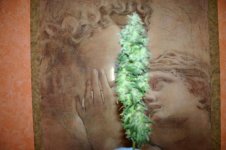SonnynGeechi
Member
I plan on experimenting with using all red led. I have heard of people using straight red from the beginning to the end of the process. I understand that this isn't exactly copying nature but there are some benefits as well is disadvantages to growing this way. Well I was thinking on trying red from seed to flower and the only thing I was worried about was stretching. I am going to do a homemade aero/hydro style setup. I want my plants to stay short say no greater than 24-36inches. When do I stop vegging and go into flowering mode. I am confused because I've read about people taking clones and just doing a 12/12 with a hps from the get go. This would also give me the ability to have clones and flowering plants right next to each other in the same system. what do you think?



